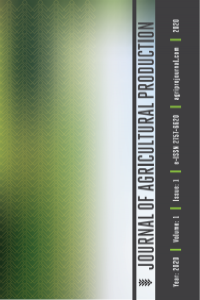Abstract
Haccp, food safety is one of the most important and critical points for human health. It can be defined as reducing the risks in biological, chemical, physical production systems that may arise in food safety and systematic preventive actions. HACCP can be shortly abbreviated as Critical Control Points Risk Analysis. Haccp is a series of food-specific standards. One of the most fundamental points in the Haccp standard is to make a hazard risk assessment and to determine critical control points and to take measures against these dangers. The Haccp standard is a set of conditions and systems for evaluating the risks that may occur during the transportation of food from the stage of production and during the use of foodstuffs. Processed seafood provides many advantages to consumers due to their long shelf life, following hygiene and sanitation rules at storage and usage conditions is crucial. Seafood processing industry is engaged in the efforts to increase the shelf life of the products, during the determination of critical control points (CCP), which is one of the important elements of the Haccp system. Correct determination of CCP will ensure that the high level quality of the product is kept for a long time. In this review, the importance and advantages of application of Haccp in aquaculture processing will be discussed.
References
- Alpay, C. (2002). Su ürünleri işleme ve değerlendirme işletmelerinde Haccp sisteminin uygulanması ve bir fast food su ürünleri işletmesi örneği. Marmara Üniversitesi Sosyal Bilimler Enstitüsü, Yüksek Lisans Tezi, İstanbul.
- Altun, İ. (2011). Süt ve Ürünlerinde HACCP Uygulaması. Iğdır Üniversitesi Fen Bilimleri Enstitüsü Dergisi, 1(2): 63-67.
- Anonymous (2004). http://www.fda.gov. Date Accessed: 15.12.2020.
- Anonymous (2020a). Retrieved from https://evrimagaci.org/gida-guvenliginde-haccp-sistemi-nedir-ve-nasil-uygulanir-8609. Date Accessed: 15.12.2020.
- Anonymous (2020b). Retrieved from https://www.foodelphi.com/su-urunleri-muhafaza-yontemleri-doc-dr-abdullah-oksuz/. Date Accessed: 15.12.2020.
- Anonymous (2020c). Retrieved from https://acikders.ankara.edu.tr/course/info.php?id=4916. Date Accessed: 15.12.2020.
- Anonymous (2020d). Retrieved from https://docs.google.com/file/d/0B0jZ3Z62Gq2qenhYb0hPa1FzQnc/view. Date Accessed: 15.12.2020.
- Balta, Ö. (2005). Su ürünleri işletmelerinde Haccp sisteminin uygulanması ve deniz salyangozu işleyen bir firma örneği. Marmara Üniversitesi Sosyal Bilimler Enstitüsü, Yüksek Lisans Tezi, İstanbul.
- Ertürk, Y. E. (2003). Dünya’da ve Türkiye’de kritik noktalarda tehlike kontrolü (HACCP) uygulaması. Ankara Üniversitesi Fen Bilimleri Enstitüsü Tarım Ekonomisi Anabilim Dalı, Doktora Semineri, Ankara.
- Mert, İ. (2002). Küreselleşme ve Su Ürünlerinde Kalite Kontrol. SÜMAE YUNUS Araştırma Bülteni, 2:1, Mart 2002.
- Özçiçek, C. (2002). Tüketicilerin işlenmiş gıda ürünlerinde kalite tercihleri, sağlık riskine karşı tutumları ve besin bileşimi konusunda bilgi düzeyleri (Adana örneği), Çukurova Üniversitesi. Fen Bilimleri Enstitüsü Tarım Ekonomisi Anabilim Dalı, Doktora Tezi, Adana.
Details
| Primary Language | English |
|---|---|
| Subjects | Agricultural Engineering (Other) |
| Journal Section | Reviews |
| Authors | |
| Publication Date | December 31, 2020 |
| Submission Date | December 19, 2020 |
| Published in Issue | Year 2020 Volume: 1 Issue: 1 |


